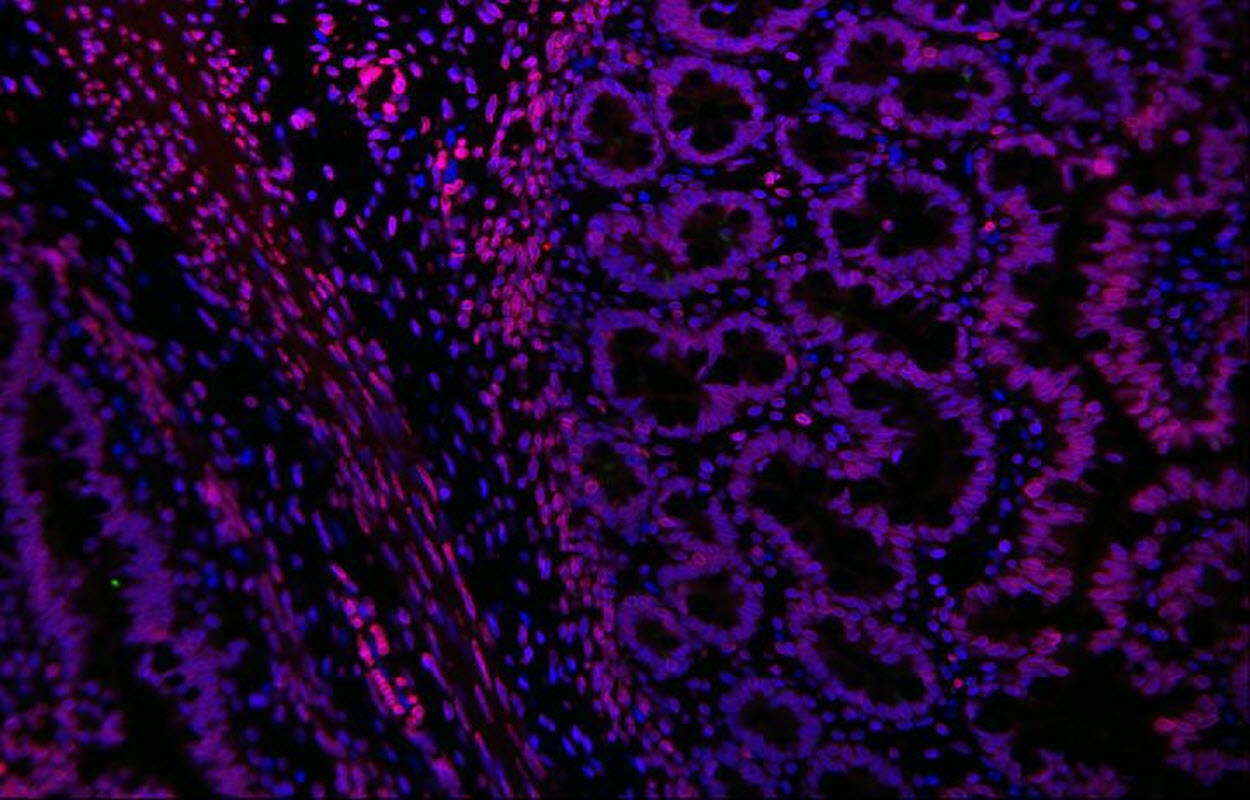
Caption : Human intestine, engineered in the laboratory of Tracy Grikscheit, MD.
Babies with Hirschsprung's disease are born with an incomplete or absent gut nervous system. Children's Hospital Los Angeles investigator Tracy Grikscheit, MD, runs a laboratory that investigates the therapeutic potential of tissue engineering - the induced growth of healthy tissue using stem cells. In a new study, Dr. Grikscheit successfully grew a fully functional gut nervous system - or ENS - in a pre-clinical model. While not yet available clinically, the finding brings surgeons like Dr. Grikscheit one step closer to helping babies in need.
Dr. Grikscheit, Chief of Pediatric Surgery at CHLA, published her findings this week in the Journal of Tissue Engineering. The growth of new, fully-functional nervous system tissue is an important milestone for research into a condition called Hirschsprung's disease. "The ENS forms when cells migrate down a major nerve throughout the digestive tract," explains Dr. Grikscheit. "In Hirschsprung's disease, the nerves don't make it all the way down the intestines." In the worst cases, she says, kids have no gut nervous system at all. This leaves intestinal tissue that cannot function. "When a baby has this disease, the situation is dire," she says. "And current medical therapies are not adequate." But the complex technique developed by Dr. Grikscheit could change this.
After years of searching for a model of Hirschsprung's disease, Dr. Grickscheit was unsatisfied with what was available to researchers. "The models weren't reliable," she explains, saying they didn't address growing the ENS from scratch. So, she made the model herself.
Growing a fully functional ENS is no simple feat. "The enteric nervous system is called the second brain because it is so beautifully diverse," says Dr. Grikscheit. The ENS coordinates intestinal muscle movement, hormone release and maintenance of stem cells, which are needed to maintain the intestinal lining.
"These cells are incredibly multi-faceted," she says. "The fact that we can implant them and they grow into this complex nervous system is a big step towards offering hope for these babies."







